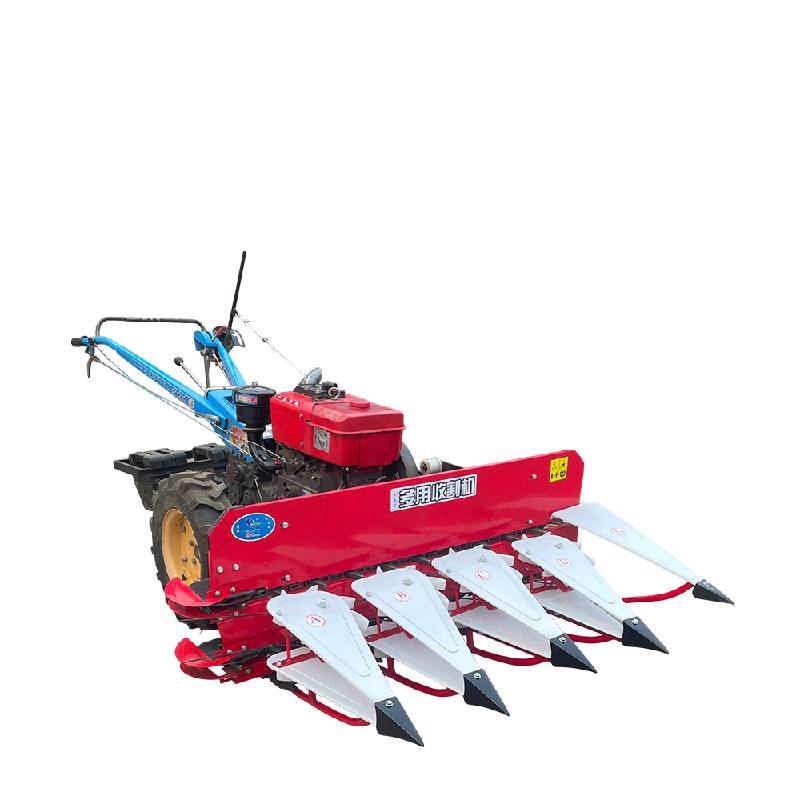Cyrus McCormick and the Reaper Revolution reaper machine
The earliest practical reaping machines were introduced in the 1830s by father-son Robert and Cyrus McCormick of Steele’s Tavern, Virginia, Obed Hussey of Cincinnati, and Montgomery County, New York farmer Enoch Ambler. We had the chance to visit the original farm on our summer road trip across the country. The McCormicks fashioned their landmark model with the help of the family’s Black slave, Jo Anderson, in their Walnut Grove Farm’s blacksmith shop and successfully demonstrated in stands of wheat and oats in July 1831. Ambler and the McCormicks secured patents for their models in 1834. These horse-pulled machines featured a reciprocating bar of small sickle sections with separating fingers and reel that could cut up to fourteen to fifteen acres a day and increased output more than tenfold over the cradle scythe method. In the late 1850s brothers William and Charles Marsh, natives of Ontario who had relocated to Illinois, introduced the revolutionary “Marsh Reaper-Binder” than could both cut grain and tie sheaves into bundles. Rights to the Marsh machine were acquired by entrepreneurs William Deering and Elijah Gammon in the early 1870s and established their base of operations in North Chicago.
Walking tractor mounted reaper head
Informed by a generation of farmer-innovators, men like Hussey and Case, and the McCormicks and Marshes would revolutionize world agriculture. “This magical machinery of the wheatfield solves the mystery of prosperity,” lauded McCormick biographer Herbert Casson in The Romance of the Reaper (1908), and “explains the New Farmer and the miracles of scientific agriculture.” Casson observed with capitalized emphasis, “…[I]t is true that until recently the main object of all nations was to get bread. Life was a Search for Food—a desperate postponement of famine. …Then came King Reaper.”
McCormick, a devout Presbyterian, was also imbued with a keen business sense that would transform his humble Blue Ridge Mountain enterprise into the world’s leading manufacturer of farm equipment based in Chicago from 1847. His improved “Virginia Reaper” model made its European debut at the 1851 Great Exhibition in London which was the first large-scale industrial fair to include foreign exhibitors. A skeptical reporter for the Times jokingly dubbed McCormick’s reaper a “cross between an Astley chariot, a wheel-barrow, and a flying machine.” But in trials conducted that summer on farming estates at Tiptree Heath in Essex and Pusey, Berkshire, an enthused jury recognized that the new inventions would render the scythe as obsolete as the mechanical thresher would the flail. Although Prince Albert would later order two Hussey machines for royal farms, the judges awarded McCormick’s eagle-emblazoned machine its Grand Council gold medal and declared the device “worth the whole cost of the Exhibition.” By 1851 McCormick’s Chicago factory was turning out a thousand reapers a year and by 1859 approximately 50,000 were in use throughout the country.

Cyrus McCormick’s passion for promotion matched his mechanical inventiveness and within a year colorful company advertisements cast his reaper in a scene as if a Roman conqueror appearing before an adoring crowd and bearing the prestigious award above a banner proclaiming it “Best in the World.” The 1853-1856 Crimean War between Great Britain and Russia interrupted export of grain from Ukraine to Europe which boosted commodity prices worldwide. American farmers responded with greater production and the favorable market brought a flood of new orders for improved equipment. McCormick deployed agents across the Midwest and eventually established a vast global network of outlets from London and Odessa to Melbourne and Wellington to sell in the grain districts of Europe and the British and Russian empires.
McCormick continued with Grand Gold Medal recognition at the glittering 1855 Paris Exposition Universelle where Emperor Louis Napoleon expressed special interest in the American’s invention. At the city’s next world’s fair eleven years later, McCormick was made a Chevalier of the Legion of Honor by imperial decree and other Grand Golds came from world fairs in Hamburg and Vienna. Grandiose promotional iconography with these international recognitions would be colorfully featured in company advertising that merged prosperity with ingenuity and gave rise to one of the era’s earliest and most successful transnational corporations.

McCormick and Hussey reapers, Pitts and Case threshers, Marsh binders, and other mechanical harvesting equipment came into widespread use in the United States in the 1850s, and in the following decade steam-powered threshing machines were commonplace. Small farmers still flailed crops in many areas, however, due to the early threshers’ expense and tendency to clog in heavy grain and crack kernels with the metal cylinders. By the 1870s reaper-binders appeared that could drop a half-dozen grain bundles at a time on the ground tied with wire and later with twine. The sheaves were then arranged into larger shocks to further ripen or be hauled directly on open wagons to stationary threshing machines. Cyrus Hall McCormick, Jr. took over leadership of the family enterprise after the death of his father in 1884, and the sprawling Chicago-based McCormick and William Deering companies merged with the Plano Harvester Company to form International Harvester Company (IHC) in 1902. By that time the three firms had acquired or consolidated with several competitors, employed some 30,000 workers, and were producing over a thousand reapers per week in “harvester war” competition worldwide.
Latest news
-
When to Upgrade Your Old Forage HarvesterNewsJun.05,2025
-
One Forage Harvester for All Your NeedsNewsJun.05,2025
-
Mastering the Grass Reaper MachineNewsJun.05,2025
-
How Small Farms Make Full Use of Wheat ReaperNewsJun.05,2025
-
Harvesting Wheat the Easy Way: Use a Mini Tractor ReaperNewsJun.05,2025
-
Growing Demand for the Mini Tractor Reaper in AsiaNewsJun.05,2025








